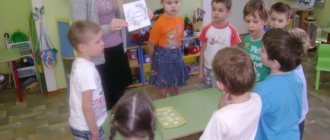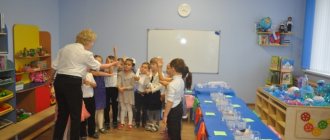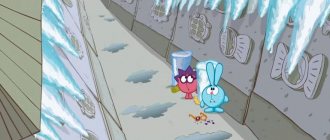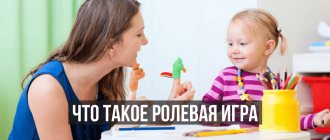Many parents have enough time to feed their child or take a walk with him, teach him new games, words, and attend a developmental group together. But not everyone thinks about the problem of protecting him from surrounding dangers in everyday life: at home, on the street, in communication with strangers, in contact with animals. But such a problem exists and deserves attention. How many accidents, most of them of the same type, could have been avoided? It is enough to devote five minutes a day to ensure that the ABC of safety for preschool children forms the basis for the behavior of your own child and helps him develop an understanding of dangerous situations and risk factors, teaches him to anticipate danger from different sources, avoid them if possible, act according to the situation and strictly follow safety rules.
Child safety at home
A preschooler spends a significant part of his time at home, so it is important to strengthen his understanding of objects used in everyday life, interaction with which can be dangerous to his health or life. The child should learn from his parents what they are for and how to use them in order to avoid an accident.
Conventionally, all items can be divided into two groups:
- those that a child should not touch without adult permission. First of all, this applies to electrical appliances and household appliances: children's safety is directly related to the ability of parents to point out the consequences of careless handling of a gas stove, socket, or hot kettle. Secondly, this applies to medicines, alcohol, household chemicals, cutting and piercing devices and instruments, which should be stored in places inaccessible to children. The most effective way to convey the essence of danger to a child is a direct prohibition under pain of punishment, supplemented by “live” examples.
- those that are permissible to use independently, but after training in the skills of their use. The principle is this: you can eat with a fork or open a window, but you can’t run with a fork in your hand and lean out of an open window, and why.
Child safety on the street
The greatest danger to a child is the street. A preschooler should know where children can walk and where not. Using illustrative examples, it is necessary to clarify what a street, pedestrian sidewalk and roadway are, and who can move along them. When walking with your child, you should pay his attention to surrounding objects and objects that he can only encounter on the street. These are trucks and cars, animals, insects, strangers. Tell what exactly can be dangerous, for example, a wasp can sting, and a dog can bite, so it is better not to contact them. In other words, the ABC of safety for children on the street is a set of basic knowledge about the rules of behavior outside the home.
Teaching preschoolers the rules of interaction with strangers deserves special attention. Why is communicating with strangers dangerous for him? The fact that the child is not aware of the motives of their behavior, does not know their intentions and does not foresee the consequences. When considering a situation where an adult uncle offers candy for the children to go for a ride with him, parents must clearly formulate why this is dangerous. At the same time, point out the details: a bad person does not always have an unpleasant appearance. And to make it easier to understand, give an example that a child can understand: “Do you remember the fairy tale about the dead princess, when the evil stepmother pretended to be a kind old woman and treated her to a poisoned apple?” Next, the child needs to be taught simple methods of defense in the form of a loud call for help, and better in such a manner that others do not perceive it as an ordinary childish whim (for example, “This uncle is not my dad!”, “Help me, I don’t know him!” ).
The child also needs to be explained that strangers can be useful if he suddenly gets lost in the crowd and has to use the help of adults. Daily repetition with children of their names, surnames and at least the name of the street where they live will definitely bear fruit.
Lesson - KVN in 5th grade on the topic: “The ABC of Safety”
Lesson - KVN in 5th grade on the topic: "The ABCs of Security."
Objectives: to summarize students’ knowledge of the rules of behavior in extreme situations, to teach how to act in dangerous situations, to develop the ability to work in a group. Equipment : musical accompaniment, posters with proverbs about safe behavior, first aid kit, felt-tip pens, album sheets.
During the classes.
1. Organizational moment. The teacher invites students to formulate the topic of the class hour, paying attention to the board (posters, proverbs), first aid kit, and traffic signs. Students formulate the topic of the class hour. The teacher explains the rules of the game: 3 teams take part in the game. The rules of the game are simple. For each answer, the team receives tokens. Whoever has the most tokens wins. But remember that KVN is a game of friends. 2. Game program. In the age of technological progress and the conquest of space, in the era of market relations, what do you think is most valuable to us? - Of course, health. Human health is the main value in life. You can't buy it for any money. Health is our priceless gift, It is not limitless, It resembles a ball And everything in it is harmonious. There is love and beauty in it, There is value and greatness. Kindness strengthens everything. And the symbol is our personality. But our health depends on how we respond to emergencies and whether we follow safety rules. Topic: “Fire safety” 1 competition. Riddles competition. The teams take turns asking questions - riddles. 1. So that there is no fire, don’t play with me, I am the sister of fire, little...(match). 2. You saw smoke - don’t yawn, call us quickly. (Firefighters). 3. Where people are careless with fire, there will definitely be fire. (Fire) 4. You won’t get fire from little me. (Spark) 5. He who does not take care of me will soon get burned. (Spark). 6. On the table, in a cap, and in a glass bottle, a friend settled - a cheerful light. (Light bulb) Each correct answer: 1 token. Fire is one of the greatest wonders of nature that man became acquainted with at the dawn of his existence. Fire gave people warmth and light, protected them from wild animals, and was used for cooking and making tools. Thanks to fire, humanity rushed into space. People have learned to make and store fire. However, having escaped from human control, it turned into a terrible disaster - a fire. 2 competition. Situational tasks: “How to behave if suddenly at home...”. 1. What to do if a kitchen towel catches fire? 2. The oil in the frying pan caught fire. What to do? 3.What to do if there is an unpleasant smell of burnt insulation in the apartment? Answers. You need to throw it in the sink and fill it with water. If the sink is far away or there is no water, then you need to press the burning end of the towel tightly with a cutting board, a pan lid or another non-burning end of the same towel. Immediately close the pan tightly with a lid and turn off the stove. You cannot carry a frying pan and pour water into burning oil, as violent boiling will occur, burning oil will splash, resulting in burns to your hands, face, and many sources of combustion. You need to turn off the general electrical switch, turn off the power to the apartment, and inform the adults. Do not extinguish equipment connected to the electrical network with water. Full answer: 3 tokens. Topic: On the road. 3 competition. "The words are mixed up." Task: 5 words of “road” topics are encrypted. Find the maximum number of words in 2 minutes. Words can be placed in any direction. 1. An animal that we remember when we are on the roadway as a pedestrian. 2. Traffic control device. 3. Vehicle. 4. A place on the road where the driver must yield to a pedestrian. 5. Little pedestrians. t r e s e d p l o r f g k r n e o k o o y s e a n t t s h l v s h n a k i k e b d a z r g u u e b p w s t o f fo r i e p h o e u y t s a n a v o m b i l e Each correct answer: 1 token. 4 competition. Road signs There are a lot of road signs. They warn us of possible danger. Assignment: talk about traffic signs (3 signs for each team). Each answer: 2 tokens. Topic: Anti-terror. In the modern world, many dangers await any person. Of course, we all hope that trouble will bypass us and our loved ones. But a person must be ready for anything. When disaster strikes, it will be difficult to act correctly if you do not prepare in advance. 5 competition. How to proceed? Exercise. Make a report on one of the topics: “You have found a suspicious object - what to do?”; “Frightened crowd” - how to act?”; “If an explosion occurred nearby” - what to do? Answers:
1. Do not approach the detected object, do not touch it and do not allow others to do so.
Immediately inform the duty services of the Ministry of Internal Affairs and the Ministry of Emergency Situations. Due to the possible activation of a radio-controlled fuse, do not use phones or tablets. 2. Under no circumstances go against the crowd. If the crowd gets carried away, try to avoid its center and edge - the dangerous proximity of shop windows, gratings, and the embankment. Avoid everything stationary on the way - pillars, pedestals, walls, trees, otherwise you may simply be crushed or smeared. Do not cling to anything with your hands: they may break. If something falls, do not try to pick it up under any circumstances. The main task in the crowd is not to fall. But if you do fall, you should protect your head with your hands and get up immediately, which can be very difficult to do. Then, with one foot (full sole) you need to rest on the ground and stand up sharply, using the movement of the crowd. 3. Fall to the floor. Make sure you are not seriously injured. Look around, try, if possible, provide first aid, follow all orders of the rescuers). Memo “If you find yourself hostage.” Try to remember as much as possible about the terrorists, their number, weapons. Do not resist, comply with all requirements. Do not try to escape unless you are completely sure of success. Do not interfere in negotiations, do not try to conduct them yourself. Full answer: 5 tokens. 3. Summing up. The class teacher and 2 assistants count the tokens and announce the winners in the nominations.
Teacher. Health is an invaluable happiness in the life of any person. Each of us has an inherent desire to be strong and healthy, to maintain energy and vigor for as long as possible. I hope the game was not in vain. I wish you all to know the “ABC of Safety” and follow the safety rules. This concludes our unusual lesson. Did you like the game? Which competition do you remember most? Why? Download Lesson - KVN in 5th grade on the topic: “The ABC of Safety”
We recommend watching:
Do-it-yourself life safety model Notes for a life safety lesson, 5th grade. Human behavior in extreme winter conditions Life safety lesson, 5th grade. Railway and air transport Visual demonstration material for arts and crafts classes, grades 1-5
Similar articles:
Class hour "Causes of fire", 5th grade
Road safety for preschoolers
Teaching your child some rules regarding traffic is only half the battle. The rest is to form and consolidate practical skills of safe behavior when crossing the roadway and while in transport. Due to psychological characteristics, preschoolers tend to see an incomplete picture of what is happening, since their field of vision is narrowed to individual, most striking details. This means that the child is unlikely to accurately determine the distance to an approaching car or correctly estimate its speed. In order not to create emergency situations, the ABC of safety for preschool children should be based on the principle “do as I do.” This means that the best example for a child is the behavior of his parents. Are you in a hurry? Still, wait for the traffic light to allow movement. Are you traveling in a car? Buckle up and don't speed. Such actions are much more effective than the daily repeated phrase: “Don’t run across the road at a red light.”
You need to start getting acquainted with the rules of the road as early as possible. They are easy to learn in a playful way; appropriate safety pictures for preschool children will help, clearly demonstrating the road situation. Then you can consolidate your knowledge in practice by observing the actions of pedestrians and the movement of cars.
Fire safety for preschoolers
Fire is an ardent element that can be both useful and dangerous. What are the benefits of fire? It can warm you up when it's cold. Why is open fire dangerous? You can get burned, so you need to keep your distance and not approach it. It is important to convey this to the child. And consolidate the acquired knowledge in practice, and the basics of safety for preschool children in terms of handling fire, as well as traffic rules on the roads, are best studied in a playful way. A simple reenactment: a fire truck is rushing to respond to a call, children were playing with matches, and a fire occurred. Firefighters need to quickly save children in trouble. Luckily, the firefighters made it in time! They put out the fire and told the children: “You can’t play with matches, it’s life-threatening!”
Parents should take into account that there should be few direct prohibitions when coordinating the child’s behavior, otherwise they will not be taken into account. To teach the basics of safety, it is better to use positive ways to influence a preschooler, in particular, visually demonstrate examples of critical situations and model their possible consequences, and praise him or otherwise encourage him for each case of compliance with the learned rules.
Project in the second junior group on the topic: “The ABC of Security”
Project
"The ABC of Security"
Miass
2017
Project in the second junior group on the topic: “The ABC of Security”
Author of the project:
Bochkareva Alena Petrovna teacher of MBDOU “D/s 53”
Project type:
educational and gaming
Project duration:
short-term – 1 (one) week
Implementation deadlines:
04/10/2017 – 04/15/2017
Project participants
: children, teachers and parents.
Objective of the project
:
Formation in younger preschoolers of elementary ideas about the basics of life safety;
Fostering a culture of safe behavior in a child in various situations.
Involving parents in the educational process on the basis of pedagogical cooperation and joint activities.
Project objectives
:
Introduce children to the rules of safe behavior at home, on the road, and on vacation;
To form in preschoolers an idea of objects that are dangerous to life and health that are found in everyday life;
Teach to follow certain rules of behavior at home;
To stimulate the development of independence and responsibility in preschoolers;
Expand and deepen children’s understanding of ways to protect their health and ways to behave safely in various situations;
Develop attention, observation, memory, instinct of self-preservation, caution and concentration;
Foster a caring attitude towards nature and the surrounding reality;
Draw the attention of parents to this issue and participation in project activities.
To increase the competence of parents in matters of children's safety in the environment.
Involve families to participate in the educational process based on pedagogical cooperation.
Involve parents in preparing attributes.
Project implementation stages:
1 Preparatory
Collection of information: conducting an initial survey of children and parents.
Preliminary work
2. Main (implementation of planned plans);
3. Final (summarizing).
Expected project results
:
Children must learn to put into practice the rules of safe behavior in the surrounding reality.
Pupils must know certain rules of behavior at home;
Must be able to behave adequately in dangerous situations at home and on the street: when communicating with strangers, interacting with fire hazards and other objects, animals and poisonous plants.
Must have an understanding of ways to protect their health and ways to behave safely in various situations.
Have a basic understanding of activities aimed at strengthening and maintaining health.
EXPLANATORY NOTE
The most important thing is the health and life of the child.
For their own safety, children from a very early age must clearly know the safety rules. This applies to all areas of a child’s life and activity – everyday life, play, movement. The direct responsibility of an adult is to teach a child the basics of safe behavior. A child may find himself in an unpredictable situation on the street, at home, in nature, on the road, so the main task of adults is to stimulate the development of independence and responsibility. So that children know how to behave correctly in different situations and be able to apply the acquired knowledge in real life.







